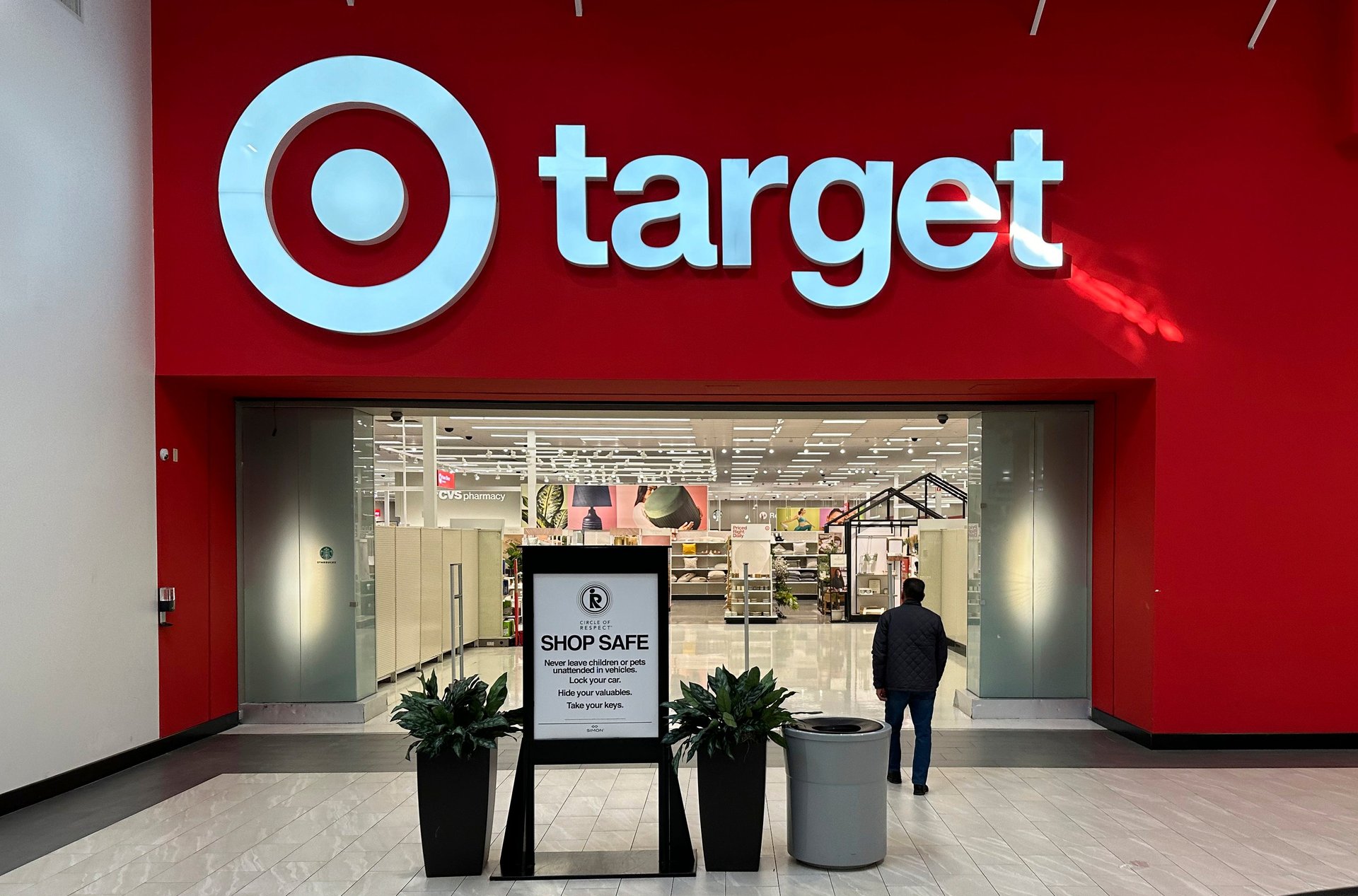Target stock almost hit a 52-week high as investors cheered big profits — and dismissed weak sales
The stock surge came even after the retail giant's first sales drop in years and a warning that revenue could remain sluggish

Target stock surged to its highest level in almost a year Tuesday, as investors cheered a huge rise in profits that beat Wall Street expectations and shrugged off the retail giant’s first sales drop in years.
Suggested Reading
Shares closed up 12% on the day, following the company’s fourth-quarter earnings release. The stock almost hit a 52-week high, closing at about $168 per share — less than $3 short of the mark.
Related Content
Target said earlier Tuesday that profits in the fourth quarter increased by 58% as it cut costs, kept its inventory tight, and benefitted from a decline in freight and supply chain expenses.
Revenue for the quarter was also up slightly, surpassing Wall Street expectations. For the fourth quarter, which concluded on Feb. 3, Minnesota-based Target reported revenue of $31.9 billion, about $2.98 in earnings per share. That was slightly higher than the $31.83 billion, or $2.42 in earnings per share, that analysts had expected.
But Target expects sales to be sluggish in the coming months. During its most recent quarter, Target’s comparable sales — which take into account digital sales and sales from stores open for at least a year — fell 4.4%. The company said it expects its full-year comparable sales to be between 0% and 2%.
Target also said it plans to roll out a new loyalty program, “Target Circle,” which will serve as a “roadmap for growth aimed at meeting consumers where they are, reigniting sales, traffic and market share gains.” During its annual investor meeting on Tuesday in New York, the company said the “evergreen price” for the loyalty program will be $49. Some perks will include a 5% discount on every purchase and delivery order, and a guarantee that delivery orders would arrive at a customer’s front door within one hour.
Compared to some of Target’s largest competitors — including Walmart, Amazon, and Costco — the 122-year-old retailer finds itself in a more vulnerable position. That’s partly because an estimated 50% of its annual sales come from discretionary items, such as toys, clothes, and electronics, according to the company’s latest financial report.
As part of Target’s effort to keep up with its competitors, the company said that it plans to open 300 larger-scale stores within the next 10 years. And Target told investors during its Tuesday meeting that it plans to increase its assortment of food and beverage items at some of its 2,000 Target locations. Target’s plan to ramp up inventory follows tightening inventory levels in previous months.
Target has also had to navigate political and cultural headwinds that affected its sales last year, including an LGBTQ+ Pride collection that sparked a backlash from customers.
The stock surge Tuesday came even amid sluggish sales and a warning that sales could remain weak this year. Target’s decline in annual revenue was its first since 2016, The Wall Street Journal reports.
